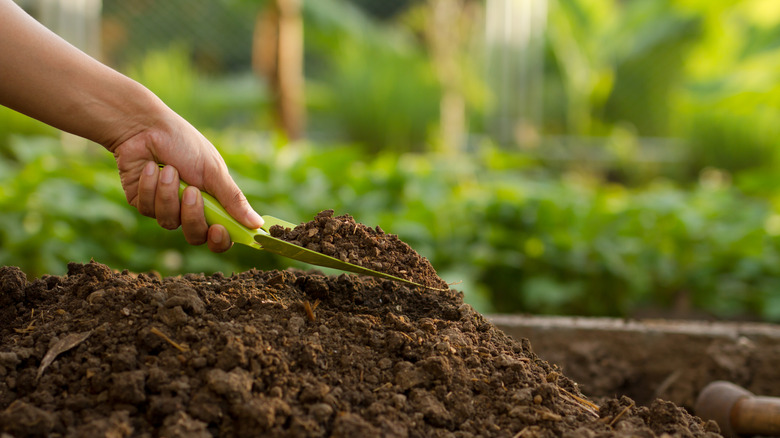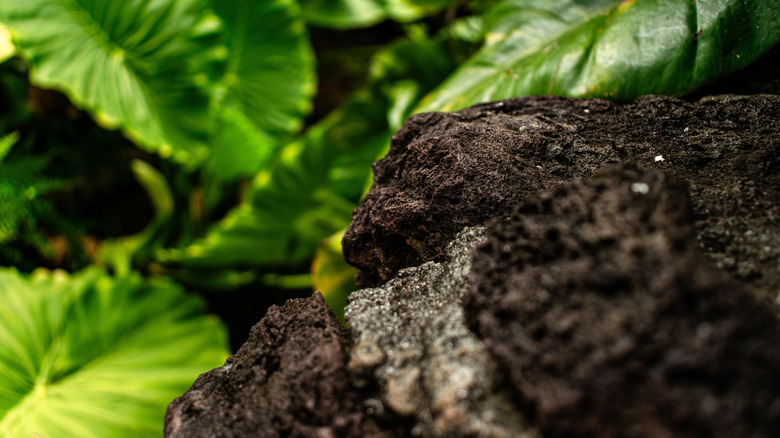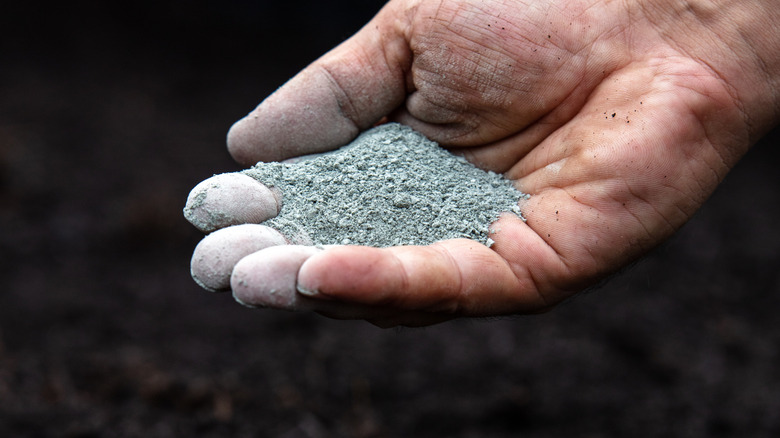Give Garden Soil A Boost With A Lesser-Known Nutrient
Most gardeners understand that a thriving garden starts with healthy soil. Sometimes they try to achieve healthy garden soil with the help of common kitchen ingredients. At other times, they will turn to planting certain herbs in gardens to naturally enrich the soil. However, there are some lesser-known solutions to give garden soil a boost for healthy plant growth. Take, for example, basalt rock dust. It is a nutrient bomb. Not only does it provide essential plant nutrients like phosphorus, potassium, and calcium to the soil, but it also has a good amount of trace elements like manganese, boron, copper, and zinc in it.
That's not all, though. Rock dust can also help retain nutrients in the soil, adjust soil pH, and improve soil structure. And the best part? Despite being lesser known, it is easily available in most gardening shops and online stores. Now you can just sprinkle and mix it into the topsoil of your garden, and you are good to go. But you will get better results if you understand what it is, how it works, and how to use it properly.
What is basalt rock dust, and how does it work?
Basalt rock dust, or simply rock dust, is a byproduct of volcanic rock or basalt mining operations. The dust starts as basalt, which is an igneous rock that forms when magma and lava cool. The rock is crushed and ground into a silky, gray powder, i.e., the rock dust. And, since basalt is a mafic igneous rock, it is especially loaded with iron and magnesium, along with the other plant nutrients mentioned above. Plus, when you add it to the soil, it doesn't just dump all nutrients at once.
Instead, it feeds your garden slowly and steadily, sometimes for as long as five years, so you won't need to reapply it every year. Also, it doesn't saturate the soil with excess nutrients and only releases what plants can actually use: no contamination, no buildup, just healthy, thriving soil. As for how basalt rock dust fixes the soil pH, that can be attributed to the presence of calcium and magnesium silicates in it.
When added to the soil, they turn into bicarbonates, which help raise the soil pH and neutralize acidic soils. Lastly, adding basalt rock dust gives the soil a loose, crumbly structure by increasing aggregate formation. This lets the soil hold more moisture and nutrients, both of which are very helpful for thriving and healthy plants.
Using basalt rock dust to give garden soil a boost
Begin with a soil test. Fall is often the best time of year to start testing the quality of your soil. This is important because, despite all of its magical properties, basalt rock dust won't do you any good if you are not using it right. For instance, if your soil is lacking healthy microbial activity, the minerals in basalt rock dust will basically just sit there without ever doing anything.
Therefore, you might want to mix it with compost, as otherwise, rock basalt dust is just a bunch of insoluble minerals. As for application rates, start low, just like you should for any soil amendment. Test a small region of your garden before going full scale. Nevertheless, if you are using it for a tree, apply about one cup for every one inch of trunk diameter.
If using it for grass, sprinkle around 30 to 50 pounds per 1,000 square feet of your lawn and water right after to help the nutrients settle in. As for gardens, mix about 5 to 10 pounds per 100 square feet of soil before planting. If the plants are already established, just sprinkle a small amount on top of the soil and then water or rake to mix it in.


